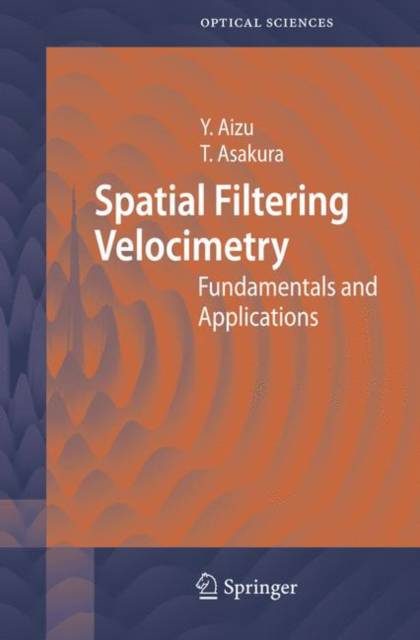
- Afhalen na 1 uur in een winkel met voorraad
- Gratis thuislevering in België vanaf € 30
- Ruim aanbod met 7 miljoen producten
- Afhalen na 1 uur in een winkel met voorraad
- Gratis thuislevering in België vanaf € 30
- Ruim aanbod met 7 miljoen producten
Zoeken
€ 105,45
+ 210 punten
Uitvoering
Omschrijving
The invention of lasers in the early 1960s enhanced the rapid development of optoelectronics which had introduced various optical measurement methods. A typical example of the methods is found in measurements of velocity. It is well recognized that optical velocity measuring methods have important advantages, such as noncontacting and nondisturbing operations, over c- ventional methods employed previously. These fundamental advantages are indicated by the enormous research e?ort which has gone into their devel- ment for many years. One of the optical methods proposed and studied to measure the velocity is laser Doppler velocimetry which was proposed in the early 1960s and extensively studied by many investigators and is at present applied to practical uses. Another is spatial ?ltering velocimetry which was also proposed in the early 1960s and studied by a number of investigators. In comparison with laser Doppler velocimetry, spatial ?ltering velocimetry had not received much attention from investigators but was studied steadily by several research groups mainly in Japan and is now practically used in various ?elds of engineering. Several important books on laser Doppler velocimetry have already been published, but there has been no book on spatial ?ltering velocimetry. This book is the ?rst contribution to spatial ?ltering velocimetry. Therefore, the Introduction of Chapter 1 provides in detail a historical review of spatial ?ltering velocimetry, relating it to other optical methods and discussing its practical relevance. In the book following Chap.
Specificaties
Betrokkenen
- Auteur(s):
- Uitgeverij:
Inhoud
- Aantal bladzijden:
- 212
- Taal:
- Engels
- Reeks:
- Reeksnummer:
- nr. 116
Eigenschappen
- Productcode (EAN):
- 9783540281863
- Verschijningsdatum:
- 3/11/2005
- Uitvoering:
- Hardcover
- Formaat:
- Genaaid
- Afmetingen:
- 242 mm x 161 mm
- Gewicht:
- 435 g

Alleen bij Standaard Boekhandel
+ 210 punten op je klantenkaart van Standaard Boekhandel
Beoordelingen
We publiceren alleen reviews die voldoen aan de voorwaarden voor reviews. Bekijk onze voorwaarden voor reviews.











